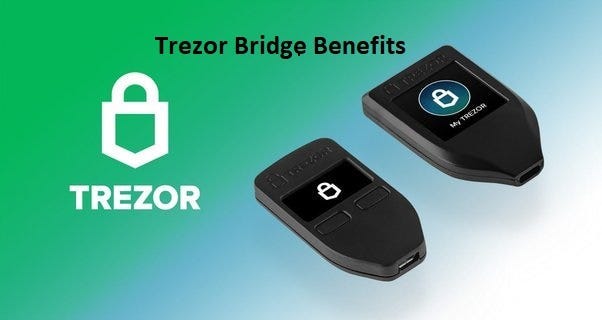What is Trezor Bridge? Trezor Bridge is a lightweight background utility that acts as a secure translator between your Trezor hardware device and browser-based wallet interfaces (the Trezor Suite, web-based dapps, or extensions). Where older approaches used browser plugins, Bridge provides an OS-level service so modern browsers can communicate with the device safely.
Why it's needed (short)
Hardware wallets use USB/HID protocols that browsers are intentionally sandboxed from for security. Bridge runs on your computer, exposes a local connection endpoint, and brokers only the narrowly required messages between the browser and your Trezor device — while keeping signing and private keys inside the device itself.
Install & update — practical steps
- Official source only: Always download Bridge from Trezor's official site (or the official Trezor Suite) — never from random search results. This prevents counterfeit installers.
- Platform installers: macOS, Windows and Linux installers are provided. Follow the platform prompts to allow the service to run.
- Browser prompt: After install, a browser page or the Suite will usually detect Bridge and request permission to connect. Grant access only for the site you trust.
- Automatic updates: Keep both the Trezor device firmware and Bridge updated. Updates patch bugs and strengthen compatibility.
Security model — what to understand
Trezor devices perform all cryptographic operations inside the hardware. Bridge only passes messages — it cannot and does not expose your private keys. Even if Bridge runs on a compromised computer, an attacker still cannot extract private keys without your device and PIN. That said, follow standard endpoint security best practices: keep OS and browser updated, use strong unique passwords, and avoid using Bridge on unknown/public machines.
- Verify installer checksum (when provided).
- Use official Trezor Suite for firmware updates.
- Never reveal your recovery seed to software — only enter it into the device when required during recovery.
Troubleshooting common issues
Here are frequent issues and fast fixes:
- Bridge not detected: Restart the Bridge service or reboot the computer. On macOS and Linux check for the Bridge process; on Windows check Services/Task Manager.
- Browser says "no Bridge found": Close and reopen the browser, ensure the Bridge service is running, and allow any firewall access for the process.
- Device not recognized: Try a different USB cable or port; USB hubs sometimes cause trouble. Prefer a direct port on your machine.
- Firmware/compatibility errors: If a dapp requests firmware not present on your device, use Trezor Suite to update firmware according to the official guide.
Developer & advanced notes
Developers integrating hardware-wallet support typically connect to the Bridge API (a local HTTP endpoint). Calls should be minimal and only request what is necessary. When testing, use clear origin checks and only allow connections from trusted local pages. If you build a wallet extension or site, always prompt users with clear language about actions requiring device confirmation (e.g., transaction signing).
Compatibility & alternatives
Trezor Bridge works with most modern browsers and the official Trezor Suite. For headless or server-based needs there are other integration approaches, but for consumer-level use Bridge is the recommended and supported path. Alternatives like WebUSB are more browser-dependent and historically required additional permissions; Bridge remains the stable cross-platform solution.
Best practices for everyday users
- Use a dedicated, secure computer when performing high-value operations, if possible.
- Keep a verified copy of your recovery seed stored offline (hardware safe or bank safe deposit) — never as a plain text file on your computer.
- Before approving transactions on your device, always check the destination address and amounts on the device screen — not only in the browser.
Short checklist: Before you connect
- Downloaded Bridge from official Trezor sources.
- Your OS and browser are up-to-date.
- USB cable/port verified and device unlocked when prompted.
- Confirmed transaction details on the device screen before approving.
Trezor Bridge is intentionally small and focused: it is a utility that enables secure, practical interactions between web interfaces and your hardware wallet while keeping sensitive keys where they belong — inside the device. When used with care, it helps deliver both convenience and strong security.
